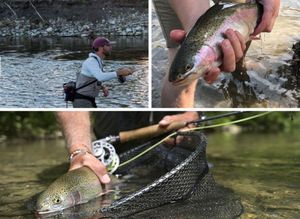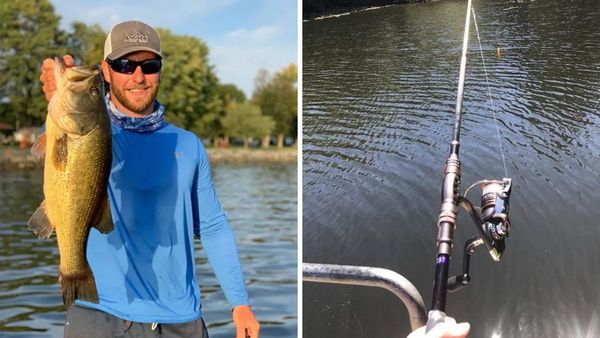When it comes to enhancing your fishing experience with a fish finder on a kayak, the integration of a transducer is a pivotal step. Anglers navigating the diverse Chesapeake fisheries often debate between two prevalent transducer mounting options: sidearm mounts and through-hull mounts. The decision-making process can be daunting, but a detailed analysis of the advantages and disadvantages of each method can guide you to the most suitable choice for your angling needs. This exploration is based on extensive testing with a Lowrance Hook 7 Reveal fish finder and a 3-in-1 Triple Shot Transducer, applied in both configurations over several months of active fishing.
Through-Hull Kayak Fish Finder Transducer Mounting
Advantages:
- Ease of Installation: Particularly in a Hobie Compass, the Hobie’s Lowrance-ready plate facilitates a straightforward setup.
- Minimal Drag: The design ensures that water resistance is not noticeably increased.
- Clean Cable Management: Wires can be neatly routed within the hull or beneath the seating area.
- Simplified Rigging: Reduces the complexity of preparing the kayak for use.
- Unobtrusive: Remains out of the way during the fishing process.
Disadvantages:
- Installation Challenges: Non-specialized kayaks may present difficulties due to the lack of a dedicated transducer mount.
- Limited Transferability: Moving the setup from one vessel to another can be cumbersome.
- Potential for Damage: In shallow waters, an additional protective plate may be necessary to safeguard the transducer.
Sidearm Kayak Fish Finder Transducer Mounting
Advantages:
- Portability: The transducer can be effortlessly transferred between different kayaks.
- Protection from Impact: Positioned above or flush with the hull's bottom, the transducer is shielded from grounding damage.
Disadvantages:
- Increased Drag: Noticeable reduction in speed and potential impact on maneuverability.
- Noise Production: The disturbance in the water can be bothersome to both the angler and aquatic life.
- Wave Sensitivity: Large waves may cause the transducer to emerge from the water.
- Sidescan Interruption: Optimal positioning is crucial to avoid disruption in sidescan functionality.
- Obstruction Issues: Can impede the handling of the kayak and the process of reeling in fish.
- Wire Management: It is challenging to keep the cables organized and out of the way.
The comparative experience between the two transducer mounting options was stark. For my specific requirements, the through-hull mount significantly outperformed the sidearm mount, primarily due to its negligible drag and user-friendliness. The sidearm mount exhibited a speed decrease of approximately 0.2 to 0.3 mph and generated enough noise to raise concerns about disturbing fish while trolling or in shallow waters. Additionally, the clarity of both side-scan and down-scan imaging appeared superior with the through-hull setup. To enhance protection, a Berleypro cover was paired with the Lowrance mounting plate in the Compass and the 3-in-1 Triple Shot, ensuring the transducer was shielded from impacts. The installation process was remarkably simple, involving a mere seven screws and three steps.
The only scenario where a sidearm mount might be preferable is if there were plans to utilize the transducer across multiple kayaks or boats. Even in such a case, the inclination might still lean towards a through-hull mount, accepting the minor inconvenience of unscrewing when necessary to switch vessels.






